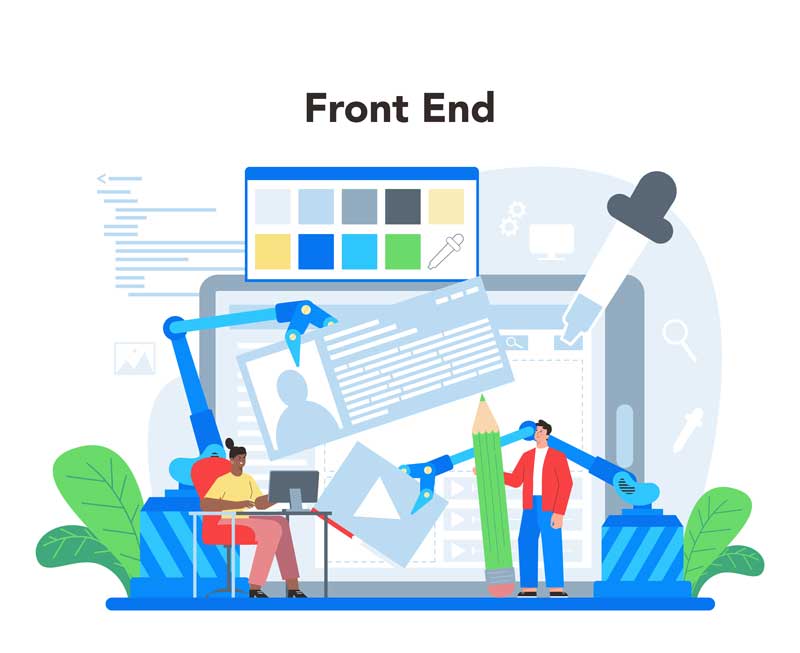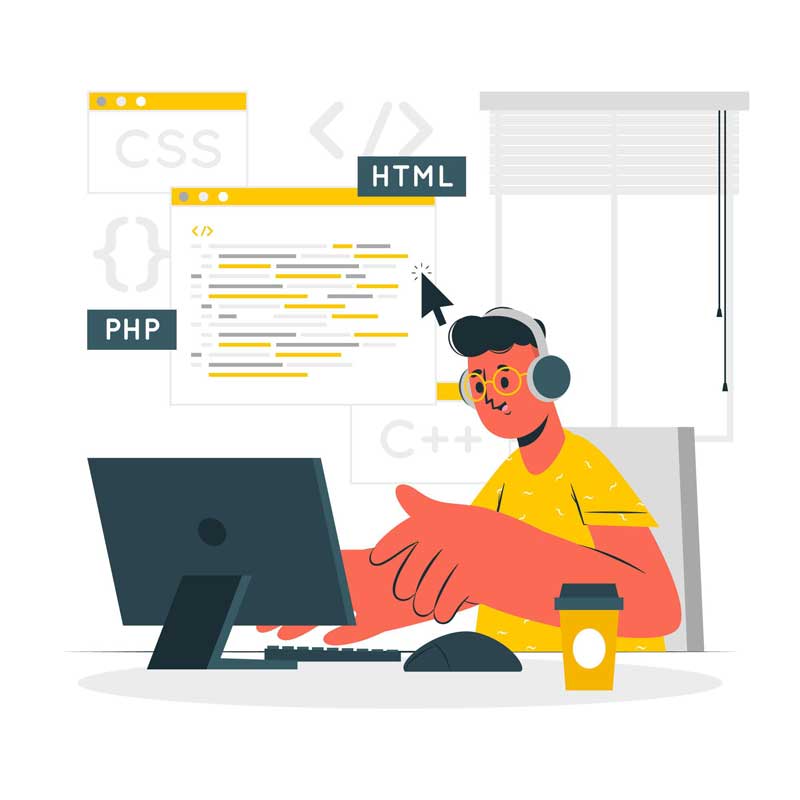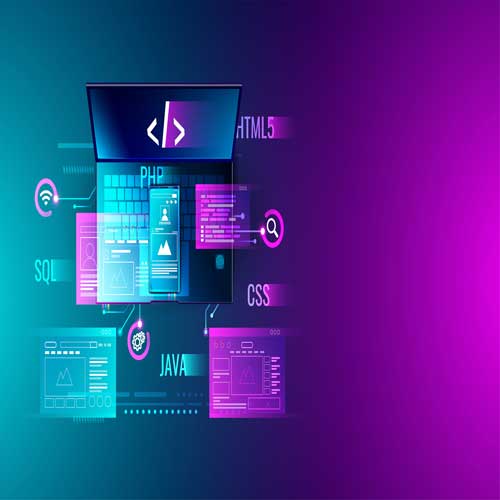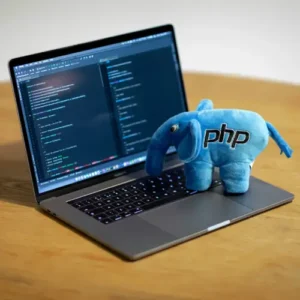A Full Stack Developer is the best person in the modern world to represent the phrase “versatile” in terms of professional versatility. Full Stack Developers, who are skilled in both frontend and backend web development, are the multi-skilled experts that every business and brand lusts after.
Since the beginning of the digital era, an increasing number of businesses and organizations are using their websites to establish a distinctive online presence. Naturally, the field of web development is expanding at a rate never previously seen, which has caused a significant increase in demand for knowledgeable Full Stack Developers.
Full stack web development – what is it?

Full stack web development is a technique for handling the front end and back end of two distinct web development domains.
Let’s first recognize what a full stack developer is and what a full stack developer does before learning how to become one.
Exactly who is a full-stack developer?
You must first learn the elements of web development in order to completely appreciate the function of a full-stack developer. Frontend and backend development are the two main components of web development. Therefore, there are two components to every web or mobile application: the frontend and the backend.
The user interface, or frontend, of an application is what users can see and interact with; however, the backend is where the magic happens. The business logic of an application comprises how the system works and how data flows through a sequence of tasks, how data is saved, and where the solution is implemented.
The Full Stack is made up of the frontend and backend. An operating system, a server, a database, and other essential tools like libraries, frameworks, environments, and so on make up a tech stack. A Full Stack is created when several such tech stacks are built and run simultaneously.
Do full-stack developers do anything?

A software specialist who is equally skilled in frontend (client-side) development and backend (server-side) development is known as a “Full Stack Developer.” Each layer of the tech stacks used to create software is familiar to full stack developers. They are familiar with how each layer works and, more significantly, are capable of interacting with all the backend elements.
Full Stack Developers are highly knowledgeable and have a diverse skill set. As a result, being a Full Stack Developer requires years of software development experience. They are highly prized by both established businesses and fledgling entrepreneurs. Taking full stack web development courses considerably boosts your chances of landing a job at your ideal company because the weight of your CV increases when you add credentials from recognized organizations.
What core competencies are required of Full Stack Developers?
A Full Stack Developer, as we’ve already established, boasts a broad range of abilities. The following Full Stack Developer abilities are essential.
HTML/CSS
CSS stands for Cascading Style Sheets, whereas HTML stands for HyperText Markup Language. Web content is added using HTML, and a website’s style and styling are customized using CSS. The appearance and feel of a website are both determined by HTML and CSS, and this eventually plays a significant role in luring potential clients.
In order to use markup to define the structure of web pages, Full Stack Developers must deal with HTML. For the HTML elements to be presented effectively, they must also be skilled in CSS. In order to develop an interactive, user-friendly, and captivating frontend for applications, Full Stack Developers need to have considerable understanding in both of these programming languages.
JavaScript
JavaScript is a necessary Full Stack Developer expertise when it comes to web and software development. The majority of the time, adding behaviors to HTML requires the object-oriented programming language. One of the most often utilized languages for creating front- and back-end server code is this one. Additionally, the only programming language that can operate natively on the server and in a browser is JavaScript (Node.js).
Developers that work on the full stack must have a thorough understanding of JavaScript’s concepts and functionalities, including React and Angular. One of JavaScript’s best qualities is that it has a ton of helpful features like functions, prototypes, higher-order event delegation, and closure that make it easier to make responsive web pages.
Additionally, Full Stack Developers are required to update their expertise of JavaScript whenever new frameworks, libraries, and tools are released. In addition, DOM and JSON usage are skills that must be having by Full Stack Developers.
GitHub and Git
Everyone who is a developer or who aspires to be one has heard of Git. It is a “distributed version control system” that is open-source and can meet all of your development requirements. It offers quickness and effectiveness for both little and big projects. With Git, developers can easily keep track of all the modifications made to software/applications, codes, websites, documents, and other related material. Professional developers must have a GitHub profile in order to collaborate with other developers; this is required.
Git enables Full Stack Developers to keep track of every small change made to the application codebase. All the fundamental Git commands and examples must be familiar to them. Full Stack Developers can take advantage of special security, productivity, and management benefits by using Git. Full Stack Developers that are familiar with Git can work more effectively and cooperatively with other programmers and developers on the same project.
Backend languages
Although HTML and CSS, along with JavaScript, are the two most important frontend languages, the backend of an application or piece of software is equally important. Despite the fact that backend development is a completely separate ballgame, there are many programming languages available. You may acquire the requisite languages to become a full stack developer by taking a full stack web development course.
For backend development, a Full Stack Developer has to know at least some of these languages:
One of the most popular options for backend programming is PHP, a free and open-source language that runs smoothly on Windows, macOS, and Unix.
Python is very well-liked by programmers and developers all over the world because of its English-like syntax, easy learning curve, and wide range of libraries and frameworks.
Ruby is an effective programming language. It is supported by a vibrant developer community and features good dependencies and documentation, making it the best option for backend development.
Java is a versatile programming language. It can be applied to the creation of desktop, mobile, and web applications. Additionally, Java offers a variety of frameworks that further streamline the backend development process.
The wizards of software development are full stack developers. They have a wide range of expertise in both frontend and backend development.
Whole Stack Developers must be knowledgeable with the specifics of web architecture. They must understand how to organize the code, classify the files, organize the data in databases, and carry out the necessary computational activities because their main role is to create sophisticated software programs from the start.
Database preservation
A database is required for all online applications so that the data may be kept. This makes sure developers can access the data in the future. A Full Stack Developer with deep knowledge of relational databases and database storage is required for database storage. Full-stack engineers need to be skilled at managing databases; they should be able to create, comprehend, and work with database queries. Additionally, they must be familiar with XML and JSON.
Simple design abilities
Given that a Full Stack Developer is concerned with both the front end and the back end, they need to be proficient in basic design principles. To make a website appear beautiful and appealing, frontend design skills are essential. A website with a clean, user-friendly design will always win over visitors.
Therefore, Full Stack Developers need to be familiar with the fundamental web design concepts, such as UI & UX design, prototypes, scalability, etc.
What are the essential abilities for backend developers?
Python: Due to its simplicity of learning, it is one of the most popular development languages and is regarded as the fastest-growing programming language. The language enables a variety of programming paradigms with ease and contributes to outstanding data visualization. As a result, learning Python is essential.
The foundation of the internet is HTML. As a result, it can assist backend developers in figuring out the structure of a web page while collaborating with other languages.
JavaScript: Similar to HTML, this language is primarily used for web pages, but platforms like Adobe Acrobat also use it for smooth functioning.
Structured Query Language, or SQL, is used by backend developers. SQL is a crucial technology since it greatly facilitates the manipulation of relational databases. In addition, it speeds up operations like building new tables, setting table permissions, and running searches against databases in addition to enabling quick deletion and insertion of records.
API (REST & SOAP) development is a highly sought-after ability for any full-stack developer. Being familiar with API is essential if you want to work on outstanding projects.










